Energy 101 – Cities & Rising Energy Consumption
Cities are global hubs of communication, commerce, and culture. However, activities that often characterize urban spaces require significant energy consumption.
Despite only covering 3% of the earth’s surface, cities are responsible for up to 80% of the world’s energy consumption and 75% of carbon emissions. [1,2] With continued city growth, it is estimated that by 2050, more than two-thirds of the world’s population will live in urban areas – up from 55% today.
Cities are also home to the world’s richest and poorest communities, with vastly unequal ecological and carbon footprints. As the world continues to urbanize, it becomes increasingly important to consider exactly what impact cities have on the planet and why they may have the unique ability to catalyze bold climate action.
Carbon emission and energy use in cities can be divided into two categories – direct emissions and embedded emissions: [3,4]
Direct emissions:
A city’s direct emissions are largely a result of energy use in the city and fall into one of three activities:
- Electricity and fuel use in residential and commercial buildings
- Road transportation, particularly cars and trucks
- Electricity used for heating and cooling – this will be particularly important as rising global temperatures are expected to increase use of air conditioning systems
However, direct emissions produced within cities is not just a climate problem but also carries a significant health burden. With nine in ten people in urban areas breathing in polluted air, the World Health Organization estimates over 6 million premature deaths per year are attributable to air pollution. This is more than the deaths from malaria, HIV/AIDS and tuberculosis combined. [4]
There also exists an economic case for reducing direct urban emissions. Multiple studies have found that investing in low-carbon energy policies like retrofits, clean energy, and sustainable buildings would result in lower energy bills for both households and commercial buildings. [6,7]
Embedded emissions:
While it’s critical to look at a city’s direct energy consumption and carbon emissions, a large portion of cities emissions are embedded in the food and products that urban dwellers consume. Oftentimes, these products are imported from all over the world, resulting in higher carbon emissions needed to transport the goods.
Building upon the ecological footprint concept developed by researchers William Rees and Mathis Wackernagel, research indicates most cities have an ecological footprint multiple times the size of the actual city boundaries. With increasing city demand for carbon intensive products like meat and dairy, or bigger cars, we will see increases in the amounts of land, water, energy, and other natural resources be required to sustain the upward trajectory of consumption.
Solutions
To address the climate crisis, cities will have to reduce their overall consumption of energy and of natural resources, while ensuring its residents maintain or gain access to basic needs and achieve good quality of life. Here are some ways cities can pilot innovative climate solutions that reduce emissions that also benefit their citizens:
- Greening electricity use:
- Energy conservation is a key strategy to reducing emissions from electricity use. Designing more sustainable buildings, incentivizing retrofits, updating building codes, and enforcing energy efficiency standards in cities can reduce demand for electricity.
- Cities also have a power in phasing out fossil fuels on a large scale
- Representing over a billion people, over 1300 cities have set targets to boost renewable energy
- Additionally, nearly 50 cities have enforced complete or partial bans on fossil fuels. [5]
- Dense, walkable communities with public transportation:
- Density can act as one of the strongest methods that a city can employ to fight climate change. By building dense, walkable communities with affordable public transportation and grocery stores, schools, and businesses close to people’s homes, cities can reduce the number of cars on the road, reduce urban sprawl, and promote urban planning for people and green spaces.
- Fewer fossil fuel burning cars will also have the added benefit of reducing air pollution, while increasing urban green space provides essential natural cooling that counters the urban heat island effect.
- Shifting consumption patterns and becoming more self-reliant:
- Cities have unique potential to shift consumption patterns to reduce their overall carbon and ecological footprints. Here’s one reason why: They tend to have closer relationships with the small businesses, community groups, and grassroots organizations in the city, who are some of the most important players in helping to advocate for and shape the culture and lifestyle of a city’s residents. For example, climate policies that support a shift to plant-based diets and reduced food waste would be more equitable and more effectively implemented when bolstered by policies and community-level initiatives that increase food access for low-income residents, investments in community-led food justice initiatives, and opportunities for small businesses and community organizations to participate in the transition.
Although making these shifts to transportation systems, food systems, and energy systems will be a big challenge – they pay off for the environment and for city residents will be invaluable. Just investing in energy efficiency and building upgrades alone could generate anywhere from 2 to 16 million jobs annually, depending on the city, while investing in public transport and vehicle efficiency could bring in even more millions of jobs [8].
Conclusion
Direct and embedded consumption and carbon emissions within cities has caused the ecological footprint of many urban areas to extend far beyond their own internal operations and energy use. As a result, cities have a responsibility to decarbonize buildings, transportation, and businesses, as well as consider how their actions can reduce negative impacts on natural ecosystems, rural communities, and Indigenous lands outside of their political boundaries.
However, cities also have the unique opportunity to kickstart decarbonization and accelerate the sustainable energy transition with potential to lead the way to a greener future – even when national climate commitments and international negotiations are progressing slowly. The large concentration of people in cities, particularly young people, also means climate activities can organize more effectively and in large numbers to take decisive action and build more sustainable, equitable communities.
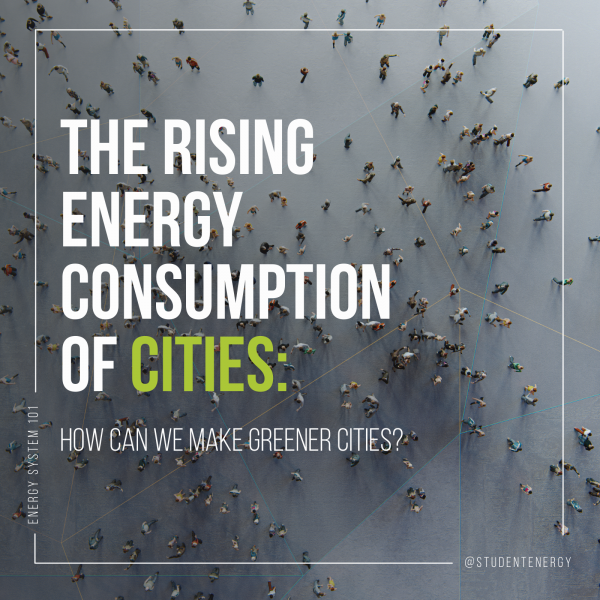
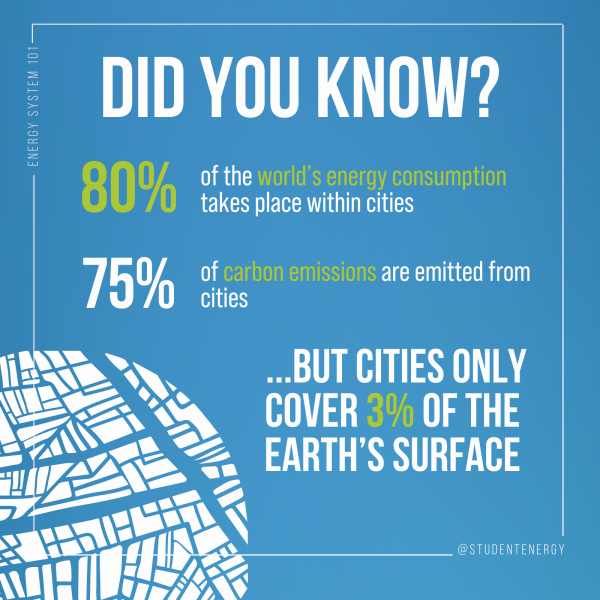
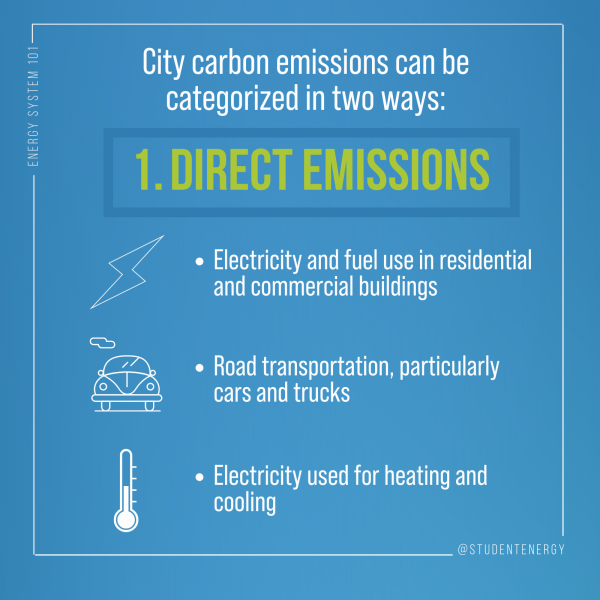
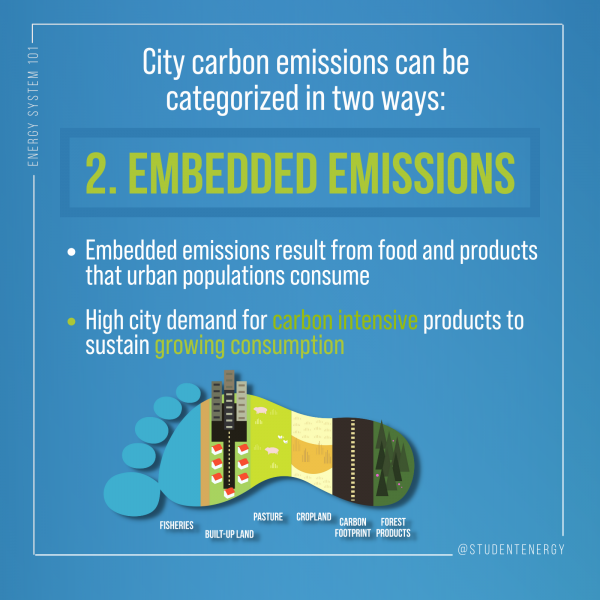
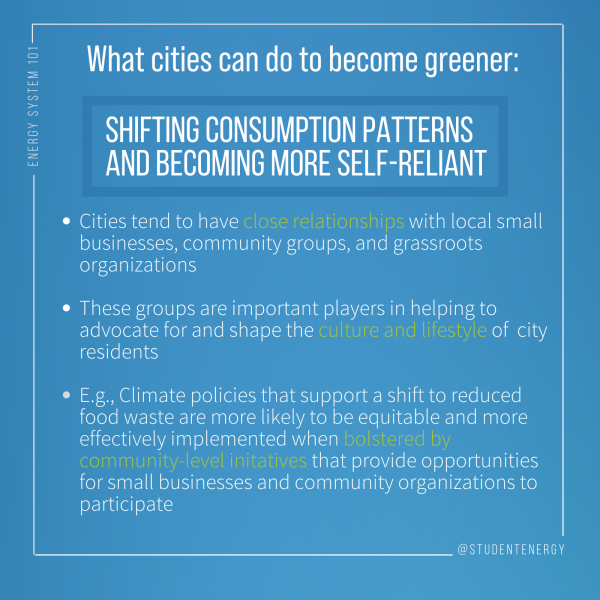


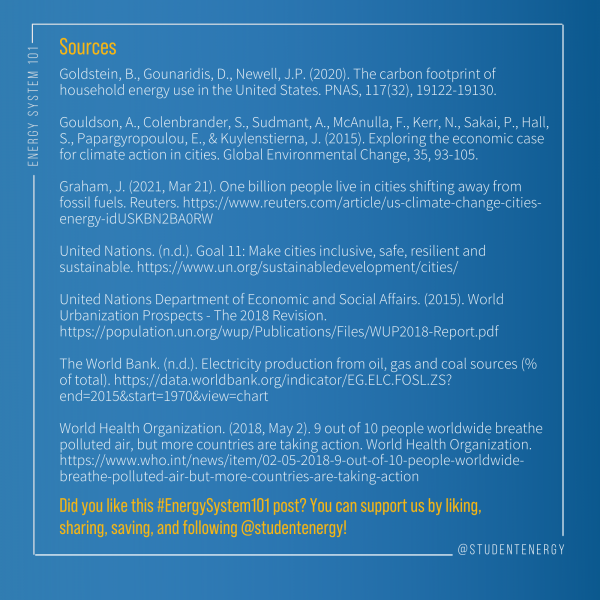
References:
[1] United Nations Department of Economic and Social Affairs. World Urbanization Prospects – The 2018 Revision. New York: United Nations; 2015 [cited 2022 April 12]. 126 p. Available from: https://population.un.org/wup/Publications/Files/WUP2018-Report.pdf
[2] United Nations [Internet]. New York: United Nations; n.d. Goal 11: Make cities inclusive, safe, resilient and sustainable. [cited 2022 April 12]. Available from: https://www.un.org/sustainabledevelopment/cities/
[3] de Coninck H, Revi A, Babiker M, Bertoldi P, Buckeridge M, Cartwright A, Dong W, Ford J, Fuss S, Hourcade JC, Ley D, Mechler R, Newman P, Revokatova A, Schultz S, Steg L, Sugiyama T. Strengthening and Implementing the Global Response. In: Masson Delmotte V, Zhai P, Pörtner HO, Roberts D, Skea J, Shukla PR, Pirani A, Moufouma-Okia W, Péan C, Pidcock R, Connors S, Matthews JBR, Chen Y, Zhou X, Gomis MI, Lonnoy E, Maycock T, Tignor M, Waterfield, T, editors. Global Warming of 1.5°C. An IPCC Special Report on the impacts of global warming of 1.5°C above pre-industrial levels and related global greenhouse gas emission pathways, in the context of strengthening the global response to the threat of climate change, sustainable development, and efforts to eradicate poverty. Geneva: Intergovernmental Panel on Climate Change; 2018.
[4] The World Bank [Internet]. Washington: The World Bank; n.d. Electricity production from oil, gas and coal sources (% of total). [cited 22 April 12]. Available from: https://data.worldbank.org/indicator/EG.ELC.FOSL.ZS?end=2015&start=1970&view=chart
[5] Graham, J [Internet]. London: Reuters; 2021 Mar 21. One billion people live in cities shifting away from fossil fuels. [cited 2022 April 12]. Available from: https://www.reuters.com/article/us-climate-change-cities-energy-idUSKBN2BA0RW
[6] Goldstein B, Gounaridis D, Newell JP. The carbon footprint of household energy use in the United States. PNAS. 2020, 117(32):19122-19130.
[7] Gouldson A, Colenbrander S, Sudmant A, McAnulla F, Kerr N, Sakai P, Hall S, Papargyropoulou E, Kuylenstierna J. Exploring the economic case for climate action in cities. Global Environmental Change. 2015, 35: 93-105.
[8] Sudmant A, Gouldson A [Internet]. Washington: The City Fix; 2018 June 8. Cleaner Air, New Jobs, Reduced Inequality: The Benefits of Low-Carbon. [cited 2022 April 12]. Available from: https://thecityfix.com/blog/cleaner-air-new-jobs-reduced-inequality-benefits-low-carbon-cities-andrew-sudmant-andy-gouldson/